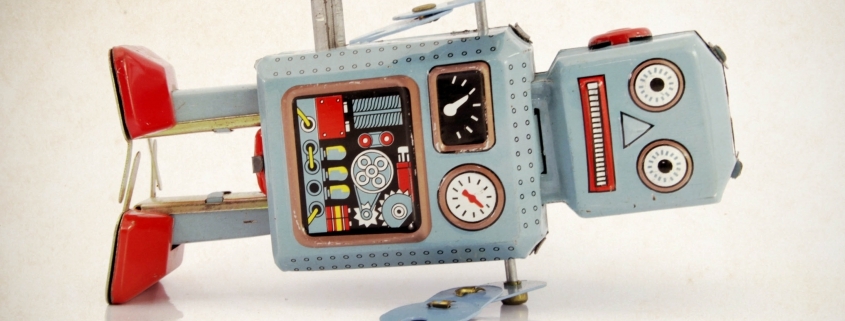What AI Cannot Do for Sales
AI is already the hottest buzzword among the B2B sales community. I have heard the term more through early March of 2017 than I’ve heard Account Based Marketing in all of 2016 or Social Selling in all of 2015.
I should be elated as a service provider of AI for sales teams, but here is the rub – there are “rumors” that it could also replace sales roles and I take objection to that.
Here are some things that AI just cannot do for sales teams:
-
-
-
Think about the customer’s business.
AI for Sales can tell a sales person which prospects might be the most relevant to call and most likely to purchase based on a series of data inputs that impact a predictive lead score. I believe in predictive lead scoring, especially when it is embedded into the seller’s workflow or deal flow, and not just a confusing number that the sales person is left to translate on his or her own. Predictive lead scores should tell a seller who will buy, what product to sell, and what content to use.
However, AI cannot read the annual reports, attend speaking sessions, understand the buyer’s personality, and translate that information into a tailored message that will capture a senior buyer’s attention. It cannot create a compelling way to track ROI on its own. It just can’t.
-
Replace seller intuition.
When you pay a sales person to work for you, you are also buying their instincts. True sales professionals have a commercial intuition. They have a nose for the deal – high performers have an accurate sense of which deals will close and which ones will not. They know it in their bones.I will give a personal example to make this a bit more real. Here at MarketBridge, we serve up AI for Sales through our Stringer interface. We visually show easy to understand predictive scores and easy to access recommended content per prospect. Most of the deals that our team works have a score of at least 65 out of 100.
However, we have been speaking with an unnamed prospect that was originally scored a bit lower at 40. We felt that this one deal was closer to 50 / 50. Why? We interacted with this team in the past, understand their business, had dinners and onsite visits, answered their tough questions and influenced how they think about their business. In addition, we know with full faith that we can help that customer and discussed what the long term partnership looks like when we deliver a pilot.
A 50% shot on a deal like that is worth our time. AI cannot intuit that.
The main influencer now has a score of 67.
-
Look someone in the eyes.
There is talk that AI will replace seller activities. I do see a path within the next few years that AI could replace some of the more basic tasks of sales. For example, maybe AI for sales can start adding a personal flavor on how to reply to an inbound lead.
But, AI for sales cannot replace the level of trust that is still required in B2B sales. I personally don’t sign business contracts in the way we replace our Café du Monde coffee grinds at home. Maybe some folks do, and maybe AI can help those individual buyers. But today’s B2B buyers are still rocked by the post-recession economy and are still cautious of the risk of taking on a new supplier. An algorithm cannot replace the trust that they need to move forward. Just can’t.
-
-
In conclusion, I grew up watching the Terminator franchise and what I believe is no “sales-terminator” will come out of AI. There is a greater chance of AI becoming self-aware and ending the human race than it replacing B2B sales professionals in peaceful, competitive workforce between humans and machines. And if my recent experiences with AI are of any indication, the threat of Judgement Day is a long way away. (“Siri, what is the date of Judgement Day in the Terminator movies?” “One moment. OK, calling Beyoncé’s cell phone.”)
Long and short of AI for Sales is this… It does help new sales people to ramp into roles faster. It does reduce the cost of sale by focusing teams on the right customer segments. It does place all customer data in one location. It does remove the guess work from sellers who can now spend more time selling rather than being a research analyst.
When used correctly, it is a powerful tool that lets sales people focus on the craft of selling. Yet it will not replace sales roles. That is until it translates this blog and learns what to focus on during its next development sprint.





